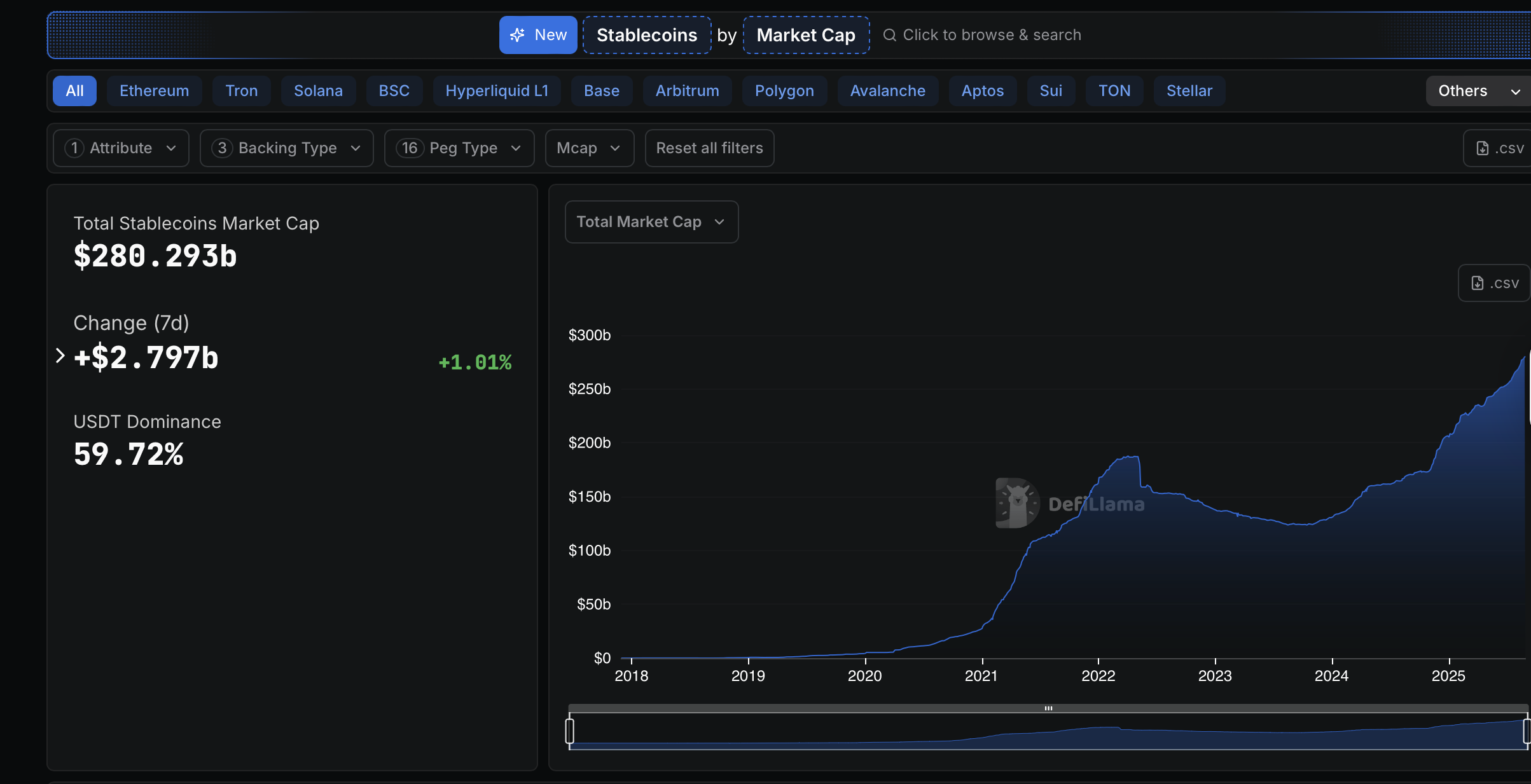Programmable money is a form of digital currency with embedded rules that automate spending, compliance and conditional payouts; venture investors poured nearly $100 million into stablecoin infrastructure—M0 ($40M) and Rain ($58M)—as the stablecoin market cap hit $280 billion, signaling renewed investor interest.
-
M0 raised $40M to issue application-specific stablecoins with built-in rules for liquidity and access.
-
Rain secured $58M to help banks issue regulated, compliant stablecoins and enable real-time payrolls.
-
Stablecoin market capitalization reached $280 billion (DefiLlama); investors back programmable stablecoin infrastructure.
Meta description: Programmable money gains traction as stablecoin funding rises; M0 and Rain secure nearly $100M amid a $280B market cap—read key takeaways and next steps.
What is programmable money and why is funding rising?
Programmable money is digital currency with embedded rules that execute automatically via smart contracts. Investors funded nearly $100 million in stablecoin infrastructure recently, backing platforms that embed compliance, access controls and conditional payouts directly into stablecoin design.
How did M0 and Rain secure funding and what will it finance?
M0 announced a $40 million Series B led by Polychain Capital and Ribbit Capital to expand rails for issuing application-specific stablecoins. Rain closed $58 million in Series B funding led by Sapphire Ventures, with participation from Dragonfly, Galaxy Ventures and Samsung Next, bringing its total to $88.5 million.
The same day stablecoin capitalization reached $280 billion, startups M0 and Rain announced nearly $100 million in new funding rounds for programmable money.
Venture investors have poured nearly $100 million into stablecoin startups, backing new infrastructure for programmable money.
M0, a Switzerland-based platform that lets developers issue custom stablecoins, announced a $40 million Series B on Thursday led by Polychain Capital and Ribbit Capital. Founded in 2023, M0 has partnered with projects including MetaMask and Playtron to integrate issuance rails into consumer apps.
Rain, a U.S. startup building bank-facing tools for regulated stablecoins, raised $58 million in Series B funding led by Sapphire Ventures with backing from Dragonfly, Galaxy Ventures and Samsung Next, taking its total funding to $88.5 million.
The financing announcements coincided with the stablecoin market capitalization reaching a record $280 billion on Thursday, per DefiLlama data.

Stablecoin market cap as of Thursday. Source: DefiLlama
Related: Japan wrote the first stablecoin rulebook — so why is the US pulling ahead?
How do M0 and Rain take different approaches to programmable money?
Both companies focus on programmability, but with different priorities. M0 builds issuance rails for application-specific stablecoins with embedded rules governing liquidity, access and permitted uses. One client, Playtron, integrated an M0-powered “Game dollar” directly into a handheld gaming system.
Rain emphasizes flows and compliance. Its tools enable real-time, compliant payrolls across more than 100 jurisdictions via a partnership with Toku, and it supports Solana, Tron and Stellar to power programmable cards and multi-chain spending programs.
How is programmable money being tested by governments and enterprises?
Governments and private firms are piloting programmability across payments and grants. Kazakhstan’s digital tenge pilot funded a rail link to China with tokens programmed to disburse only when milestones were met. The National Bank of Kazakhstan ran a VAT refund pilot, cutting processing from 70–75 days to 10–15 days by automating eligibility checks.
The Monetary Authority of India expanded its digital rupee pilot to include programmability and offline capabilities to improve accessibility and tailor payment flows.
Private-sector experimentation includes Circle’s June 2024 programmable wallets and gas-station functionality on Solana, enabling USDC-based transactions to autonomously trigger smart contracts and manage transaction fees. In July 2025, TradeOS rolled out a programmable settlement layer for global commerce that ties stablecoin payouts to cryptographic proofs of real-world outcomes.
Critics warn about concentrated control: Susie Violet Ward, co-founder and CEO of Bitcoin Policy UK, cautioned on Cointelegraph’s Chain Reaction daily X space on Aug. 21 that programmable CBDCs could amount to the “weaponization of money in its purest form.”
Frequently Asked Questions
What are real-world use cases for programmable stablecoins?
Use cases include targeted subsidies, automated payrolls, conditional trade settlements and VAT refunds. Governments and enterprises use programmability to enforce rules and reduce manual processing time.
How do issuers ensure compliance with programmable money?
Issuers embed compliance checks into rules and partner with regulated institutions. Platforms like Rain focus on bank-grade compliance and geographic controls to meet regional regulations.
Key Takeaways
- Investor interest is rising: Nearly $100M flowed into stablecoin infrastructure this week, underscoring confidence in programmable money.
- Two distinct approaches: M0 focuses on customized issuance rails; Rain emphasizes compliant flows and bank integration.
- Government pilots accelerate adoption: CBDC and pilot projects demonstrate tangible efficiency gains for conditional payments.
Conclusion
Funding for programmable stablecoins is accelerating as market capitalization and pilot programs validate use cases. M0 and Rain received significant Series B backing to expand issuance, compliance and cross-chain capabilities, which could make programmable money more practical for payrolls, subsidies and automated trade settlements. Watch for regulatory developments and enterprise pilots that will shape adoption.
